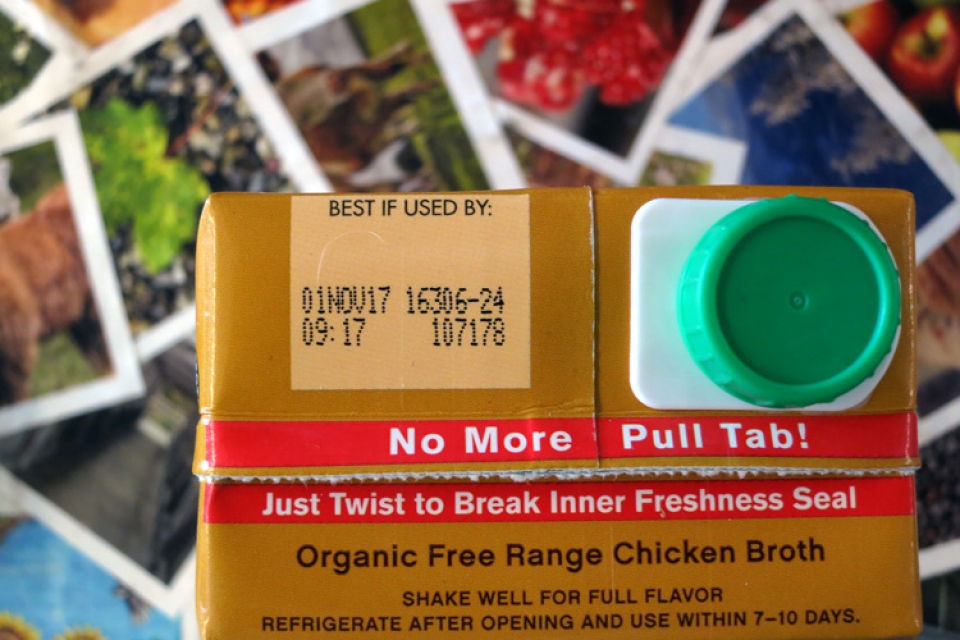Debunking Date Labels
Do you know the difference between the phrases “sell by,” “best by,” and “expires” on products? If not, you are not alone. It’s estimated that confusion over date labels is estimated to account for 20% of consumer food waste, which throws away $29 billion in spending each year! There is currently no federal law requiring date labeling on products, which has led to a patchwork of state regulations for date labeling and voluntary labels from producers and manufacturers.
Food date labeling started back in the 1970s. As consumers became more detached from the sources of their food, they wanted a way to measure freshness. At the time, manufacturers put date labels on products in a way that only made sense to retailers so they knew how to rotate products on the shelves, but consumers wanted access to that information too. Between 1973 and 1975, at least 10 different food date labeling bills were introduced at the federal level in response to consumer demand, but none passed (today, only infant formula has a federal law regulating date labeling).
Instead, some states passed date labeling laws, and stores and manufacturers started adding date labels to their packages voluntarily. These weren’t uniform labels, however, since there was no federal law indicating what was required. Different phrases were used, including “use-by,” “sell-by,” “best-by,” “best if used by,” and “expires on.” These dates originated as “freshness” dates, but many consumers now see these dates as indicators of food safety.
In the absence of a federal law, most states have some sort of date labeling law on the books for at least some food products. However, the language of these laws differ between states and some states require labels on more products than others. For example, Vermont only has a state date labeling law that pertains to shellfish, whereas New Hampshire has a state date labeling law that pertains to dairy and sandwiches, and New York doesn’t have any state date labeling requirements at all. Additionally, some cities have passed their own local laws regarding food date labeling that are more stringent than their state law, which can lead to even more confusion.
Graphic from The Dating Game: How Confusing Food Date Labels Lead to Food Waste in America
Primarily to address the concerns about the connection between date labels and food waste, bills were introduced into Congress in May 2016. HR 5298 and S 2947 are known as the “Food Date Labeling Act of 2016.” The bill was referred to the House Committee of Energy and Commerce and House Committee of Agriculture. It is awaiting hearings.
The bill as introduced calls for a uniform standard of date labeling – one date for quality dates and one for safety dates. For quality dates (which would not be required on packages), the bill would require all packages that choose to include a quality date to use the phrase “best if used by.” For safety dates, the bill would require certain high-risk ready-to-eat products include the phrase “expires on” somewhere conspicuous on the label. The bill would not stop anyone from selling or donating products that have passed the quality date on the package.
Even though there is a bill awaiting hearings in Congress, the USDA recently told egg, meat, and dairy producers that they want producers to only use the phrase “best if used by.” The Grocery Manufacturers’ Association has not said if it will also adopt that label across the industry on other types of products. This may change depending on the fate of the Food Date Labeling Act of 2016.
For now, here’s a little primer on date labels and how to mitigate food waste:
- Expiration dates equate to food safety. All other phrases (best by, sell by, use by, etc) are just suggestions relating to best taste and freshness.
- In all cases except expiration dates, employ the sight and smell test before throwing something out. Do you see mold growing or is the product decomposing? Does it smell funky? If not, it’s most likely okay to consume (or at least try a little to see if still tastes okay).
- In the case of fruits, veggies, and cheese, if you see isolated moldy spots, just cut off the bad spots – the rest of the item should still be okay to eat, as long as it’s been stored correctly.
